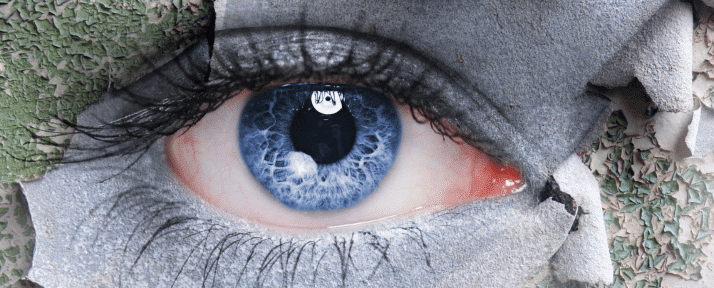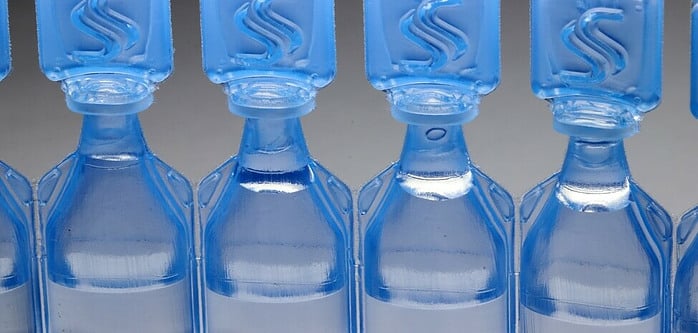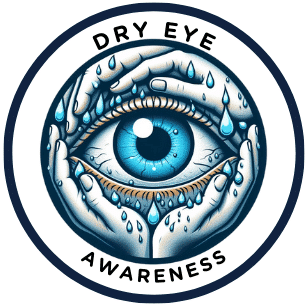
Have you ever wondered if that irritating feeling in your eyes might be more than just fatigue? It could be Dry Eye Syndrome (DES), a common condition that affects millions each year. This isn’t just about discomfort; it’s also about the health of your eyes.
Dry Eye Syndrome occurs when your eyes don’t produce enough tears, or when the tears evaporate too quickly. It can make your eyes feel scratchy, sting, or burn. You might also find yourself squinting or blinking more than usual, trying to clear that bothersome sensation. And guess what? The culprit could be the tear film covering your eyes.
In my opinion, to appreciate how DES takes hold, it’s crucial to understand the tear film’s vital role. Think of this film as a protective shield that coats the surface of your eye. It’s not just a single layer of moisture; the tear film is a complex structure with three distinct layers, each important for keeping eyes hydrated and irritant-free.
You’re going to find out about the specifics of these layers in the next section. But for now, know that this tear film is crucial for keeping your eyes comfortable and your vision clear. If any part of it doesn’t work properly, it can lead to sensations of dryness and the unwelcome symptoms of Dry Eye Syndrome.
So as we move on, take note of how this delicate balance is maintained, and think about how each layer of the tear film contributes to your daily comfort and eye health. Understanding these will set the stage for exploring the causes and solutions for DES.
The Science Behind Tear Film: Layers and Their Functions
The tear film coating the surface of your eyes might seem simple, but it’s actually a complex, multi-layered marvel that plays a crucial role in your eye health. Think of it as a specialized team, where each member has a unique responsibility that’s vital for the overall performance. There are three key players: the lipid layer, the aqueous layer, and the mucin layer.
The outermost buddy in this trio is the lipid layer. It’s produced by the meibomian glands and has a job that’s straightforward yet paramount: slowing down the evaporation of tears. This layer is like the shield that keeps your eyes’ moisture from disappearing into the atmosphere. It’s the reason why you can go through most of your day without feeling like you’re in a desperate need of eye drops.
In the middle, there’s the aqueous layer. Now, this is the main moisture provider, secreted by the lacrimal glands. It supplies nourishment and washes away foreign particles and irritants, effectively keeping the eye’s surface clean and clear. In my opinion, it’s pretty much the workhorse of the team, handling a lot of the heavy lifting when it comes to keeping your eyes comfortable and vision sharp.
Finally, meet the mucin layer, the inner layer that’s directly applied on the cornea. It’s produced by goblet cells and it makes sure that the aqueous layer spreads evenly across the surface of your eye, no matter how irregular the cornea might be. It’s essentially the foundation that lets the aqueous layer do its job effectively and without it, things would get pretty uncomfortable.
Now, when these layers are in harmony, you’ve got yourself a well-oiled machine—your eyes are moist, comfortable, and your vision is crystal clear. But if this balance is thrown off, which can happen for various reasons, you’re going to find out about why your eyes might start to feel like they’re bearing the brunt of a mini sandstorm.
Understanding the Disruption of Tear Film in Dry Eye Syndrome

Now you’re probably wondering how something as seemingly simple as tear film can get out of whack. Well, it’s important to realize that several culprits can upset the delicate balance of your tear film. Think of it as a finely tuned ecosystem, where each part needs to work harmoniously to keep your eyes comfortable and vision clear.
First off, the hallmarks of tear film trouble are symptoms like itchiness, redness, a gritty sensation, or even the feeling that you’ve got something stuck in your eye when there’s nothing there. If you’re experiencing these, it’s likely your tear film is crying out for help.
So what throws this system into disarray? Several factors come into play. Age is a common one – as we get older, tear production often dwindles. Hormonal changes, particularly in women during pregnancy or menopause, can also tilt the balance. Then there are autoimmune diseases, which can show up uninvited and put stress on the tear-producing glands.
It’s not just internal factors; external influences can wreak havoc too. Long hours staring at screens can reduce your blink rate, which is critical for spreading the tear film evenly across the eye. Additionally, environmental conditions like wind, smoke, or dry climates can speed up tear evaporation. That aforementioned finely tuned ecosystem suddenly finds itself in a drought, and that’s when discomfort begins.
Though it might sound a bit daunting, the good news is there are ways to manage and address these imbalances, which we’ll cover next. You’re going to find out about how simple changes in your environment and habits can make a world of difference.
Management and Treatment: Protecting the Tear Film
Now that we’ve explored the crucial role of tear film in maintaining eye health, let’s focus on what you can do to manage and treat dry eye syndrome effectively. First and foremost, regular eye exams are your best defense against progression of the condition. Your eye care professional can help tailor a treatment plan that’s right for you.
Preventative measures can go a long way in preserving tear film integrity. This includes staying hydrated, using humidifiers in dry environments, and giving your eyes frequent breaks during screen time. Simple lifestyle adjustments, like increasing blink frequency, can help reduce tear evaporation.

Treatment options vary depending on the severity and cause of your dry eye syndrome. Over-the-counter artificial tears can provide immediate relief for mild symptoms. In more severe cases, prescription medications or minor in-office procedures may be necessary to restore tear film balance and function.
Don’t overlook the power of a balanced diet and supplements. Omega-3 fatty acids found in fish oil are known to contribute to healthier tear film.
The takeaway here is that you’re not powerless against dry eye syndrome. Whether it’s making small changes in your daily routine or seeking advanced treatments, there are multiple avenues to protect your tear film. Remember, you can always adjust your approach down the road. If you ever feel overwhelmed by options or if self-care measures aren’t providing relief, it’s a good idea to consult your eye care specialist. They’re your partner in eye health and can guide you to the most effective treatments for your unique situation.
